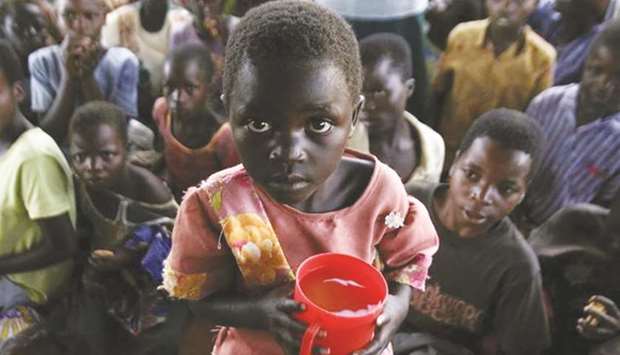

Research Supports Universal Health Coverage Goals
Introduction
On February 6, Sandun Perera, associate professor of business analytics and operations at the University of Nevada, Reno, and his international coauthors unveiled their groundbreaking research aimed at supporting the universal health coverage goals of the United Nations (UN) and the World Health Organization (WHO).
Aligning Development Aid toward Sustainable Development Goals
In their article titled “Aligning Development Aid toward Sustainable Development Goals: When and Where is Aid Effective on the Health Workforce?” published in the Production and Operations Management journal, the authors investigate the effectiveness of aid in developing the health workforce in developing countries. The UN’s Sustainable Development Goals (SDGs) focus on ensuring universal health coverage by 2030, with SDG-3 highlighting the pivotal role of healthcare workers in achieving this goal.
Research Objectives
The research aims to boost the confidence of donors and funding managers by demonstrating the effectiveness of development aid in improving the health workforce. This aligns with SDG 3.c set by the UN. Additionally, the researchers seek to provide clear guidance to funding managers and policymakers on the most effective utilization of development aid to enhance the growth of the health workforce. This will ensure that aid is allocated to the areas within the healthcare sector where it is most needed.
Global Health Workforce Shortages
Even before the COVID-19 pandemic, there was a significant shortage of healthcare workers worldwide, with a gap of 18 million between the available workforce and the required number. In 2018, most countries in the African region had less than ten nurses and midwives for every 10,000 people. The pandemic further exacerbated these shortages, leading some countries to seek assistance from others. Despite the high demand and the introduction of SDG 3.c, only 0.78% of healthcare funding in 2020 was allocated to building up the healthcare workforce. This inadequate allocation highlights the problem of insufficient funding in critical areas. The research aims to demonstrate the effectiveness of development aid when properly allocated.
Effectiveness of Health Personnel Development Aids
The research reveals that less than one percent of all official health aid has been directed towards health workforce development in developing countries. The effectiveness of health personnel development aids within specific segments of the health workforce and the constraints that determine their effectiveness were previously unknown to policymakers. This lack of knowledge hindered the provision and allocation of aids. The research findings emphasize the importance of directing aid towards pandemic-specific health workforce development, such as nurses and midwives, to address global health workforce shortages during pandemics.
Considerations for Aid Allocation
When deciding where to allocate aid, it is crucial to consider the government effectiveness of recipient countries and the current density of individual segments within the health workforce. Sending aid may not directly solve the problem if a country lacks doctors and clinical workers. The effectiveness of aid also varies depending on the existing healthcare workforce in a country.
Supporting Universal Health Coverage
Ensuring universal health coverage is a top priority under the United Nations’ Sustainable Development Goals (SDGs). The research directly supports SDG-3 on Good Health and Well-being by urging funding managers and donors to reconsider aid provision and allocation for global health workforce development. It also aligns with the Association to Advance Collegiate Schools of Business (AACSB)’s mission on the societal impact of Business School research. The insights derived from data-driven research shed light on real-life humanitarian problems.
Conclusion
The research highlights the urgent need for focused support in developing the global healthcare workforce. Despite the essential role healthcare workers play, less than one percent of official health aid targets this critical area. By emphasizing the importance of tailoring aid to match the specific needs of recipient countries and focusing on key groups like nurses and midwives, the study offers practical insights for policymakers and funding managers.
SDGs, Targets, and Indicators
1. Which SDGs are addressed or connected to the issues highlighted in the article?
- SDG 3: Good Health and Well-being
The article specifically mentions the UN’s Sustainable Development Goals (SDGs) and highlights the importance of healthcare workers in achieving SDG-3, which focuses on ensuring universal health coverage by 2030.
2. What specific targets under those SDGs can be identified based on the article’s content?
- Target 3.c: Substantially increase health financing and the recruitment, development, training, and retention of the health workforce in developing countries.
The article mentions SDG 3.c as the specific target that aligns with the research’s goal of demonstrating the effectiveness of development aid in improving the health workforce in developing countries.
3. Are there any indicators mentioned or implied in the article that can be used to measure progress towards the identified targets?
- Indicator: Percentage of official health aid directed towards health workforce development.
- Indicator: Density of healthcare workers (nurses and midwives) per 10,000 people in different countries.
- Indicator: Effectiveness of aid in addressing global health workforce shortages amid pandemics.
- Indicator: Government effectiveness of recipient countries.
The article mentions that only a small percentage (0.78%) of all the money for healthcare in 2020 went towards helping build up the healthcare workforce, indicating a need to measure the percentage of official health aid directed towards health workforce development. The density of healthcare workers (specifically nurses and midwives) per 10,000 people is mentioned as an indicator of the shortage of healthcare workers in different countries. The effectiveness of aid in addressing global health workforce shortages amid pandemics is also highlighted as an important indicator. Additionally, the government effectiveness of recipient countries is mentioned as a factor to consider when deciding where to send aid.
4. Table: SDGs, Targets, and Indicators
| SDGs | Targets | Indicators |
|---|---|---|
| SDG 3: Good Health and Well-being | Target 3.c: Substantially increase health financing and the recruitment, development, training, and retention of the health workforce in developing countries. |
|
Behold! This splendid article springs forth from the wellspring of knowledge, shaped by a wondrous proprietary AI technology that delved into a vast ocean of data, illuminating the path towards the Sustainable Development Goals. Remember that all rights are reserved by SDG Investors LLC, empowering us to champion progress together.
Source: unr.edu

Join us, as fellow seekers of change, on a transformative journey at https://sdgtalks.ai/welcome, where you can become a member and actively contribute to shaping a brighter future.






